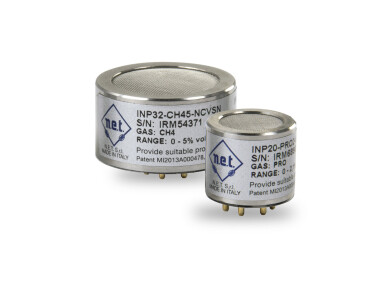Measurement and Testing
New Data Acquisition System Released
Jan 30 2015
The SMARTDAC+ GM data acquisition system, from Yokogawa (the Netherlands), improves operational efficiency due to its modular design, which facilitates the mounting and removal of modules. In addition, the SMARTDAC+ GM system supports Bluetooth wireless communications for use with handheld mobile devices.
The SMARTDAC+ GM system is expected to comply with 21 CFR Part 11 regulations in 2015.
Data acquisition systems are widely used in many industrial and test & measurement applications in a large variety of industries to acquire and record process data such as temperature, voltage, current, flow rate, and pressure. In 1951 Yokogawa became the first company in Japan to bring an electronic self-balancing recorder to market, and in 1986 introduced a multipoint data acquisition and recording system. Yokogawa currently offers a wide variety of data acquisition systems.
Depending on the application, most data acquisition systems utilise a variety of modules to acquire a wide range of data. Historically, many of these systems were equipped with a base plate for the mounting of modules. Base plates are now less common, as users prefer designs that allow the easy mounting and removal of modules. The data acquisition systems in use today can be classified into two types: those that are equipped with a monitor, and those that are not. In the latter case, the systems must be hooked up to a PC and operated using its screen and keyboard. To better accommodate the needs of its customers, Yokogawa developed the SMARTDAC+ GM modular data acquisition system. With modular I/O, users can scale their data acquisition system based on their process requirement, with the ability to upgrade as their needs evolve. In addition, wireless Bluetooth connection allows wireless communication with mobile devices.
Enhancements incorporated in the SMARTDAC+ GM data acquisition system include the following:
1. Module base
Yokogawa has developed a new module base that eliminates the need for a base plate and enables the mounting and dismounting of single modules. With earlier non-base-plate designs, modules were connected in a row. To dismount a module in the centre of the row, users would have to disconnect all the modules to the left or the right. Yokogawa's SMARTDAC+ GM system's modular design uses interconnected module bases. To replace a module, users only need to pull out the module from the module base and insert another. This greatly improves efficiency. The module bases can be easily secured to each other with a sliding lock. When the system is used in a set configuration for longer periods of time, the module bases can be fastened together with screws.
2. Bluetooth support
The SMARTDAC+ GM system supports Bluetooth connectivity to tablets running the Android OS. From a handheld device, users can wirelessly monitor and operate the system and perform settings other than those done at initial system setup, which requires the use of a PC and an Ethernet or USB connection. An Android tablet can be used to start or stop data acquisition, change settings, or monitor acquired process values.
3. Accurate power measurement
The SMARTDAC+ GM system can be connected with an Ethernet cable to a Yokogawa WT300/500/1800 power analyser, which is used to perform the simultaneous measurements of temperature and power that are often required to test the performance of devices such as home appliances. The digital transfer of measurement data to this system enables the highly accurate acquisition of measurement data.
Main target markets include company R&D units engaged in the development of home appliances, automobiles, semiconductors and new energy applications; universities; research institutes; laboratories; and manufacturing operations in industries such as iron and steel, petrochemicals, chemicals, pulp and paper, food and beverages, pharmaceuticals, water and wastewater, electrical equipment, and electronics.
Applications include acquisition and recording of data such as temperature, voltage, current, flow rate, and pressure for the evaluation testing of products, monitoring of plant equipment, and environmental monitoring.
Digital Edition
PIN 25.5 Oct/Nov 2024
November 2024
Analytical Instrumentation - Picturing Viscosity – How Can a Viscometer or a Rheometer Benefit You? - Sustainable Grease Formulations: Evaluating Key Performance Parameters and Testing Method...
View all digital editions
Events
Dec 03 2024 Dusseldorf, Germany
Dec 08 2024 Anaheim, CA, USA
Turkey & Black Sea Oil and Gas
Dec 11 2024 Istanbul, Turkey
Dec 19 2024 Aurangabad, India
Jan 20 2025 San Diego, CA, USA



















